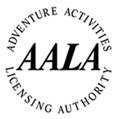Without wanting to come across like a nagging parent or someone who is paranoid of injury – you would be surprised how many people either forget, can’t be bothered or just simply chose to not warm up! Big Mistake – especially for climbers! Spending just 15 minutes warming up is one of the most crucial parts to your training session.
The thing is, even if someone is prepared to warm up or thinks they have warmed up sufficiently – they most probably haven’t. An effective warm up is can be an alien concept to a lot of climbers but it is essential if your want to prevent your body from injury and get the most out of your session.
Your warm up should follow a 3-step/phase structure.
Phase 1 – Pulse Raiser
The aim of this phase is to get your blood flowing around your body to your muscles, as well as increasing your heart rate. There is no set way to do this, however at Rock and Rapid we love skipping! There is a bucket full of skipping ropes by the entrance to the wall and we always get our Kids Club to skip before doing anything else! Other methods such as star jumps or running on the spot do the same job!
Phase 2 – Dynamic Stretching
This is a gentle stretch of a muscle through movements, so the muscles reach their maximum range but are not held in that position. Dynamic stretching allows muscle preparation, injury prevention and further warming up and loosening of your muscles. You want to make sure you don’t over do the stretching otherwise this could affect your performance later in the session. The optimum time to spend on a single stretch is 15 seconds as it elongates the muscles to their maximum capacity.
It would be beneficial to choose stretches on muscles you know you will use regularly in your climbs and it’s always best to start from the bottom and work upwards.
Phase 3 – Traverse
When you get to phase 3, you should be feeling warm, stretched and ready to start climbing. In this phase, which should last no more than 15 minutes, your body will adapt to movements and demands on your fingers.
The best way to do this is finding a stretch of wall and move across and up the wall using all the available holds. Do this for about 30 seconds, jump off and then start again. The aim of this is to get your brain in gear and ease yourself in to the later bigger climbs.
If you follow these three phases, you will be sure to have an efficient and effective warm up so you can make the most out of your climbing session.
Just to re-cap on why it is important and the benefits of warming up, here’s a summarised list:
- A mental and physical preparation
- Reduces injury
- Increases your blood flow which will activate your muscles
- Increases the oxygen going to your muscles meaning you won’t get out of breath too easily
- Prepares your muscles for stretching
- Prepares your heart from an increase in activity
- Helps your build up to harder, more challenge climbs
- Improves your overall performance
Happy Climbing!







